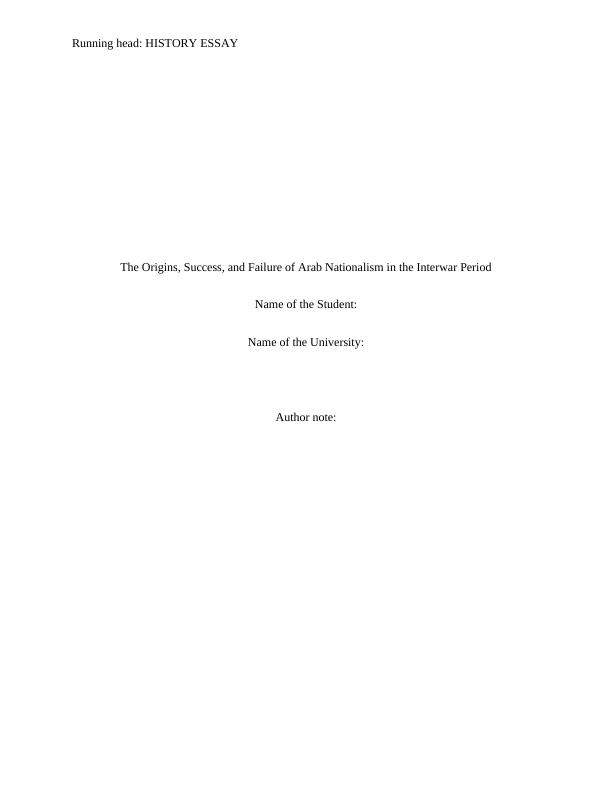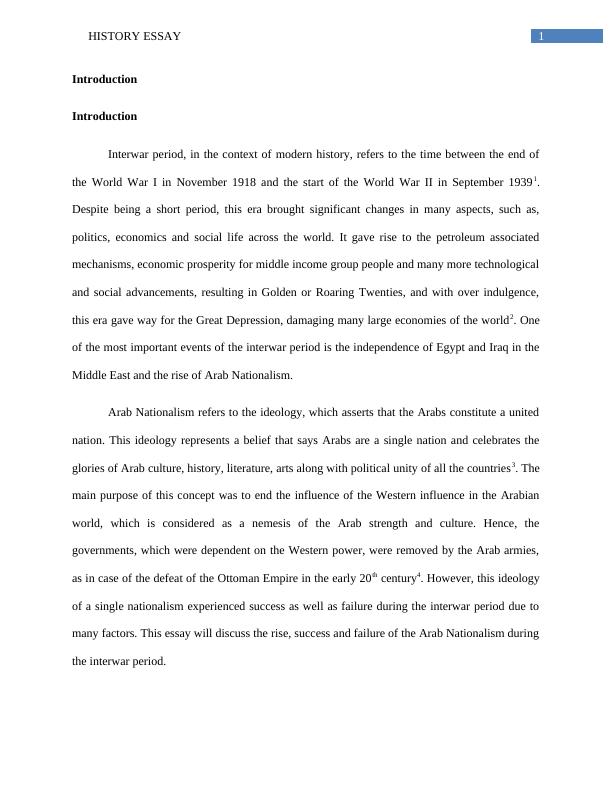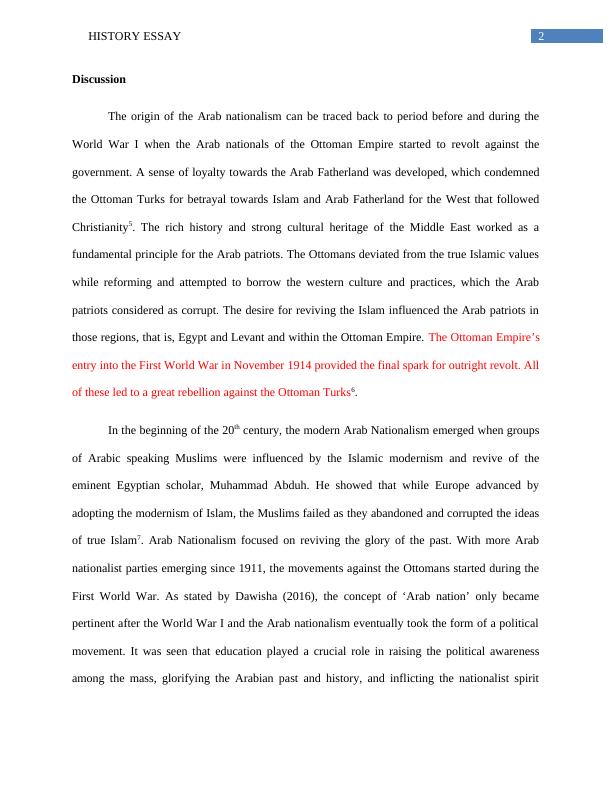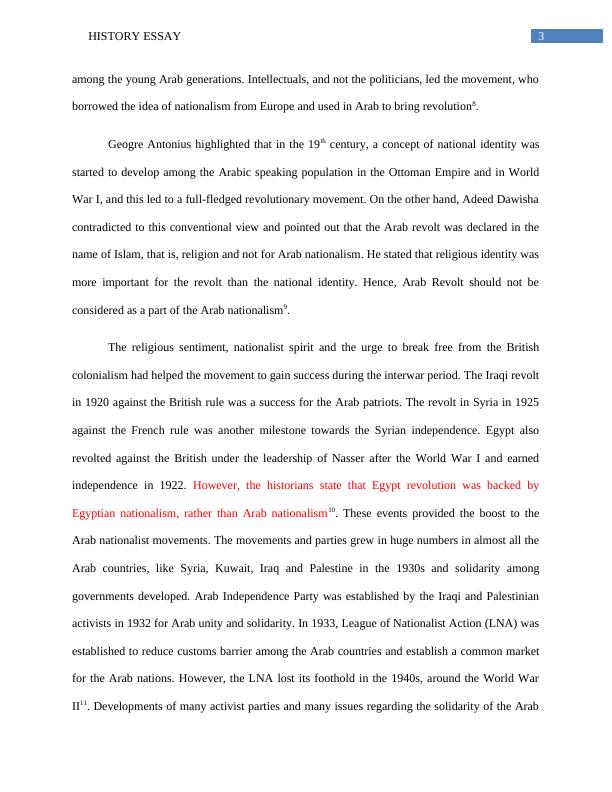The Origins, Success, and Failure of Arab Nationalism in the Interwar Period
This booklet provides guidelines for writing academic essays in the History, Latin, and Political Science department at Langara College. It includes information on avoiding plagiarism, using notes (footnotes or endnotes), and examples based on The Chicago Manual of Style.
11 Pages2671 Words333 Views
Added on 2023-06-10
About This Document
This essay discusses the rise, success, and failure of Arab Nationalism during the interwar period. It explores the internal conflicts and obstacles that led to its decline and failure.
The Origins, Success, and Failure of Arab Nationalism in the Interwar Period
This booklet provides guidelines for writing academic essays in the History, Latin, and Political Science department at Langara College. It includes information on avoiding plagiarism, using notes (footnotes or endnotes), and examples based on The Chicago Manual of Style.
Added on 2023-06-10
ShareRelated Documents
End of preview
Want to access all the pages? Upload your documents or become a member.
Worl Religion Middle East Asignment
|5
|1195
|27
Islamic Modernist Assignment PDF
|5
|1111
|230
Rentier State in the Middle East Issue 2022
|14
|3929
|16
Arabic Language and Power Identity in Lebanon
|11
|3211
|354
Reasons for Egypt's Policy Change, 1970
|6
|1302
|364
Arab-Israeli conflict Case Study 2022
|5
|437
|11




